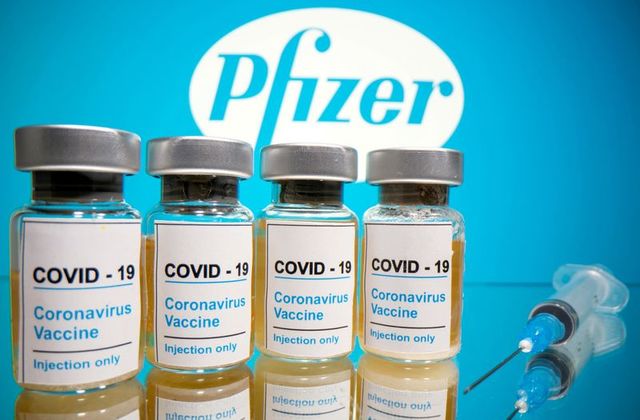Pfizer’s Venture to End COVID-19
After months of wondering when a vaccine for COVID-19 would come, many are hedging their bets on the Pfizer vaccine, which was introduced on November 9th as a hopeful prevention measure; currently, the efficacy rate, which refers to the performance of treatment under ideal and controlled circumstances, lies above 90%, which is almost 2 times higher than the flu shot and other immunizations.
Additionally, no complications have arisen due to the vaccine. With news as exciting as this, many will want to assume that the Pfizer vaccine is our long-awaited cure, but scientists are cautioning people not to jump to conclusions yet—the study is not finished and new problems could still arise.
This study began with BioTech, a company in Mainz, Germany, that later worked with Pfizer to develop the vaccine. Ugur Sahin, the chief executive and co-founder of BioNTech, began work on the vaccine once he read about the virus in The Lancet in late January. He was filled with dread, and said in an interview; “I almost instantly knew that this would affect us.” That same day, the first European cases were detected in France.
In its vaccine development, BioNTech used a technology that had never been approved to be used in people. They took genetic material, called messenger RNA (mRNA), and infiltrated it into muscle cells. The mRNA tricked the muscle cells into producing bits of protein that look like pieces of the virus. Once those bits were present in the body, the immune system would recognize and attack them.
Thus, the immune system would be on “standby” for when the actual virus infected the body and would be able to eliminate the virus quickly and efficiently, having been primed by the protein bits. Other companies like Moderna, whose vaccine is said to be 94.5% effective in the early stages of its trial, are using this RNA technology as well.
So far, scientists have made several findings in the Pfizer vaccine study, one of which is particularly exciting: an individual is protected against the coronavirus 28 days after receiving the virus vaccine! But, being vaccinated is not necessarily a walk in the park. There are certain benign side effects of the vaccine that researchers have uncovered.
Similar to the shingles shot, which leaves painful side effects for the next 1-2 days after the vaccine is injected into a person’s body, the certain trial participants for Pfizer COVID-19 vaccine are saying they felt high fever, body aches, headaches, and exhaustion. While these symptoms were uncomfortable and intense, they often went away after a day or less. And, of course, experiencing these symptoms is better than being infected by the virus.
The testing, however, is not over yet, and it is expected to continue until 164 people in the 44,000 person trial have developed COVID-19. Researchers want to reach this number to collect further data and distinguish the vaccine candidate’s performance against other study endpoints. The trials will continue to assess the efficacy rate and if any complications arise; researchers also hope to uncover how long the body will stay immune once it responds to a vaccine.
For right now, scientists believe that Pfizer is a well-efficient immunizer that is useful in preventing individuals from being affected by the coronavirus.
If all continues to go well, the expansive distribution of Pfizer’s vaccine will be a challenge. Because it is made with mRNA, the doses will need to be kept at subfreezing temperatures. Pfizer has concocted a special cooler to transport the vaccine, supplied with GPS-enabled thermal sensors. However, it is still unclear where people will receive the shots, and what role the government will play in distribution.
Furthermore, people will need to return three weeks later for a second dose to complete the immunization, making sure the patient is receiving the full effect of the vaccine.
The good news is that in Kalamazoo, Michigan there is already a football field of fridges starting to store this vaccine and preparing for the distribution process. Another one is in Europe where they will start dispersing the vaccine for the rest of the world. If all goes well, the vaccine will become available to healthy people in springtime.
Up to 50 million doses are expected to be produced by the end of this year and 1.3 billion doses in 2021. In a news release, Pfizer said it plans to pursue emergency use authorization from the Food and Drug Administration once the testing volunteers have been monitored for two months after getting their second dose of the vaccine.
It has also been announced that, if the vaccine is successful, it will be given to people free of charge, a benefit for many who have already faced the blunt economic effects that the coronavirus has caused.
All in all, with brilliant scientists hard at work across the globe at companies like Pfizer, BioTech and Moderna, maybe next year at this time, simple pleasures like giving relatives hugs will once again be possible.

Sasha is a senior who is ecstatic to spend her fourth and final year writing for the Banner as Business Editor. When she is not writing, Sasha fills her...



